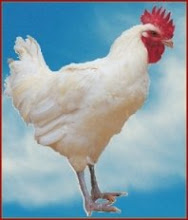
I love raspberry season! There is just something so special about the raspberry. It is delicate and elegant. It's flavor is sophisticated. It's no wonder that it is called the "King of Berries". When raspberries come straight from the farm, or are grown at home, they are even better. Something as delicate as a raspberry is only at its peak of freshness and flavor for a short time. Within hours of being picked, they begin to decline. Raspberries are very prone to mold. Once purchased, they should be used within 2 days, or preserved in some way.
After harvesting raspberries from my garden, or buying them from the farm, I get to work preserving them for future use. The berries that are not eaten fresh, or turned into sauces or jams are Individually Quick Frozen. This helps to maintain them at their peak for months.
My favorite thing to do with fresh raspberries is to turn them into pies. A raspberry pie is a special treat. The only problem is that it's hard to find a good recipe for raspberry pie. Raspberries contain a lot of water. As a result, most raspberry pies come out soupy. It is horribly anti-climactic to see all of your beautiful raspberry filling go running off the crust as you try to serve a piece of pie! I've been there, it's heartbreaking!
After many heartbreaks, I developed the following raspberry pie recipe. The key to this pie's success is arrowroot, and a lot of it. This results in a glossy, ruby-colored filling that stands up straight and tall when sliced. Also, the filling is not cooked before being added to the crust. As a result, the filling is loaded with whole, juicy raspberries, as illustrated by the picture below.

Raspberry Pie
At this point, this becomes a refrigerator pie. It should be stored in the refrigerator, not left out on the counter. It will get moldy! It is also incredibly refreshing when it is cold.
- 24 ounces (by weight) fresh or IQF raspberries
- 3/4 cup granulated sugar
- 1/3 cup arrowroot
- 1/2 teaspoon sea salt
- 1 teaspoon Tahitian vanilla
- 1 flaky pie crust
At this point, this becomes a refrigerator pie. It should be stored in the refrigerator, not left out on the counter. It will get moldy! It is also incredibly refreshing when it is cold.


























